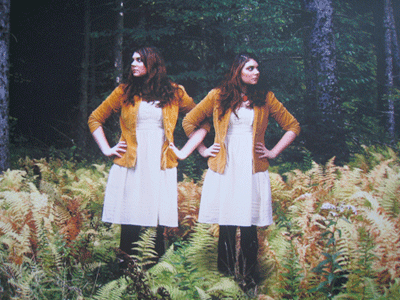
Imagine, if you will, that you are walking down the sidewalk on a bright May morning. The air feels fresh and warm. As you walk along, you notice the new leaves on the trees, the yellow dandelions dotting the green lawns. And as you take note of the external world, you also become aware of yourself moving through that world.
It occurs to you that you are a member of a community—a solid citizen, one might say. But you are also an independent self, separate and apart from your human and natural environment. In your wallet you have an ID, and at home a birth certificate. You may also have degrees or diplomas, a lengthy resume, a record of achievement. Certainly you have your special talents and acquired skills, and you also have your preferences—wine over beer, perhaps, or neither if you are a teetotaler. Where personal finances are concerned, you are better off than many, though far inferior, socially and financially, to the celebrities you see on TV. In any event, you are separate from and superior to the toads, frogs, and other creatures of the natural world, not to mention the plants and minerals. Were you to liken yourself to a non-human object, it might be a late-model car—a Prius, perhaps, or a Ford Focus. Sadly, that vehicle will one day end up in the salvage yard, but for now it’s running fine.
Now consider your self from another angle. Although you might prefer to see yourself as an independent entity, separate from your human and natural surroundings, you are in actuality as porous as a sponge. If the weather were damp and cold, you might not be feeling so cheerful. Were the flowers withered or beaten down, you might feel the same. And not only your mood but the very existence of your “self” depends on “non-self” elements: the sunlight warming your face, the water flowing in the water mains, the breakfast settling in your stomach. Moreover, not even one of your vaunted attainments would have been possible without the support of other people: not your projects and awards, your commendations or your cherished possessions. Were you to examine your place in the cosmos, you might liken yourself to a wave, which other waves have created and sustained.
Such are the contrasting perspectives in which the construct known as a “self” might be perceived and understood. If the first perspective is initially the more comforting, it is perhaps because it reflects a familiar, common-sense view of reality. In Zen teachings, this viewpoint is known as “ordinary mind,” and its frame of reference is the “relative” (or “historical”) dimension of our experience. In the relative dimension, up is up, and down is down. Self is one thing, non-self another.
Yet to those who are living on the other side of our planet, what we call up is down. And from the standpoint of absolute reality, which in Zen is known as the “ultimate dimension,” conceptual dualities such as “up” and “down,” “self” and “non-self,” are viewed as necessary but insubstantial. To exist at all, “up” needs “down.” Similarly, “self” and “non-self” are interdependent parts of an indivisible whole. As Zen master Thich Nhat Hanh reminds us, a flower is made of “non-flower” elements: light, soil, water, and so forth. Without them, the flower could not be. And what is true of the flower is also true of us. Without sunlight, water, food, and other people, none of us could live, or live in good health, for very long. What appear in the relative dimension to be separate entities—self and other, human and non-human beings—are, in the ultimate dimension, parts of the one, interconnected body of reality, where everything is changing, and everything depends on everything else.
To contrast these two perspectives is not to suggest that the first is false and the second true, the one benighted and the other enlightened. Rather, it is to propose that if we are to stay in touch with reality, and to live in harmony with reality, both perspectives must be kept in mind. “To study the Way” wrote Eihei Dogen, founder of the Soto Zen tradition, “is to study the self. To study the self is to forget the self. And to forget the self is to awaken to the ten thousand things.”
By Benjamin Howard
Source: The Practice of Zen Meditation




